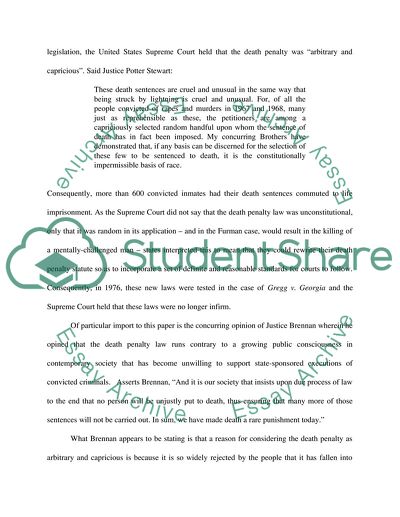Cite this document
(“Playing to the Gallery: Public Opinion as a Factor in Death Penalty Essay”, n.d.)
Playing to the Gallery: Public Opinion as a Factor in Death Penalty Essay. Retrieved from https://studentshare.org/law/1538716-playing-to-the-gallery-public-opinion-as-a-factor-in-death-penalty-court-decisions-particularly-furman-v-georgia
Playing to the Gallery: Public Opinion as a Factor in Death Penalty Essay. Retrieved from https://studentshare.org/law/1538716-playing-to-the-gallery-public-opinion-as-a-factor-in-death-penalty-court-decisions-particularly-furman-v-georgia
(Playing to the Gallery: Public Opinion As a Factor in Death Penalty Essay)
Playing to the Gallery: Public Opinion As a Factor in Death Penalty Essay. https://studentshare.org/law/1538716-playing-to-the-gallery-public-opinion-as-a-factor-in-death-penalty-court-decisions-particularly-furman-v-georgia.
Playing to the Gallery: Public Opinion As a Factor in Death Penalty Essay. https://studentshare.org/law/1538716-playing-to-the-gallery-public-opinion-as-a-factor-in-death-penalty-court-decisions-particularly-furman-v-georgia.
“Playing to the Gallery: Public Opinion As a Factor in Death Penalty Essay”, n.d. https://studentshare.org/law/1538716-playing-to-the-gallery-public-opinion-as-a-factor-in-death-penalty-court-decisions-particularly-furman-v-georgia.


